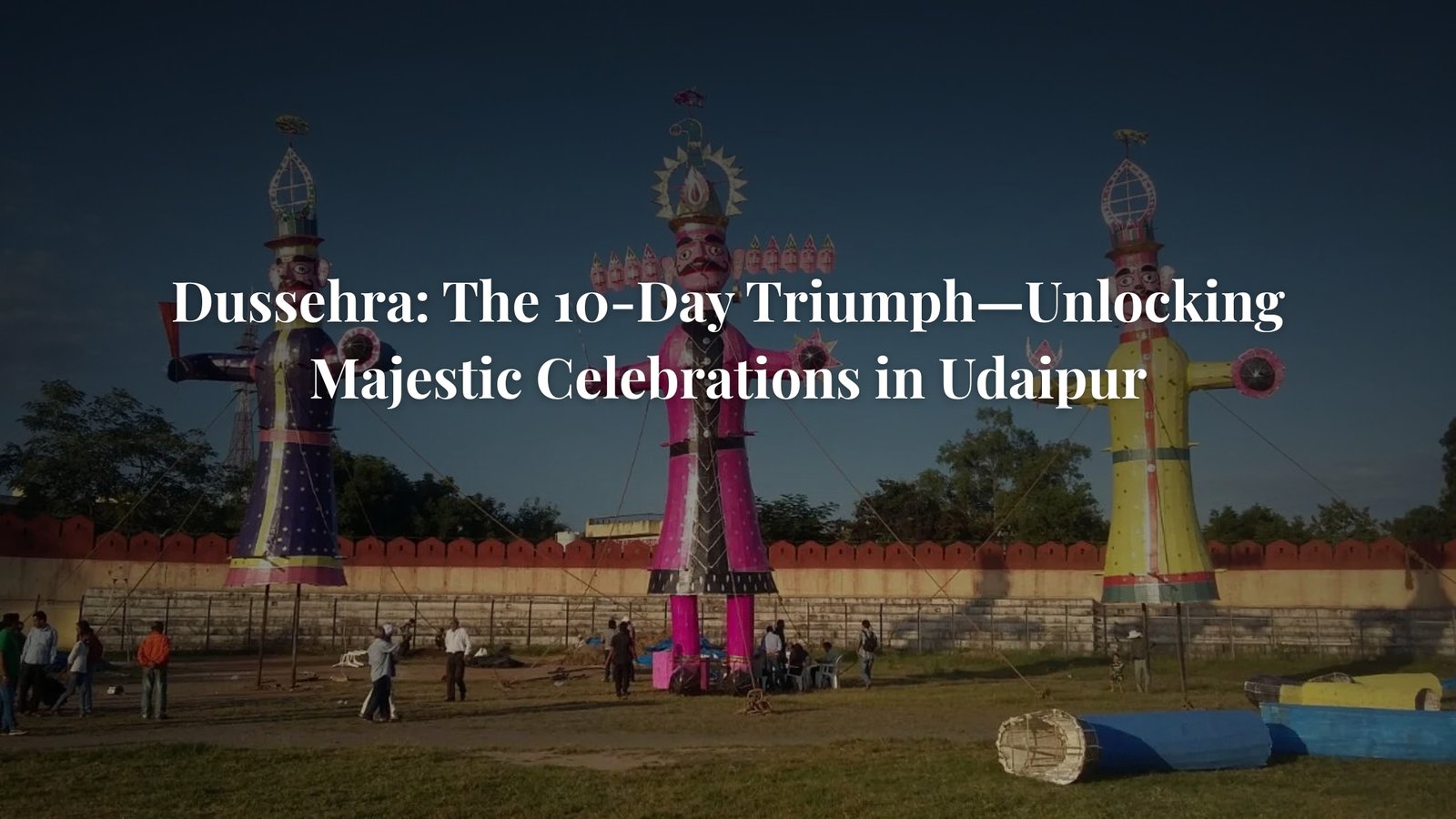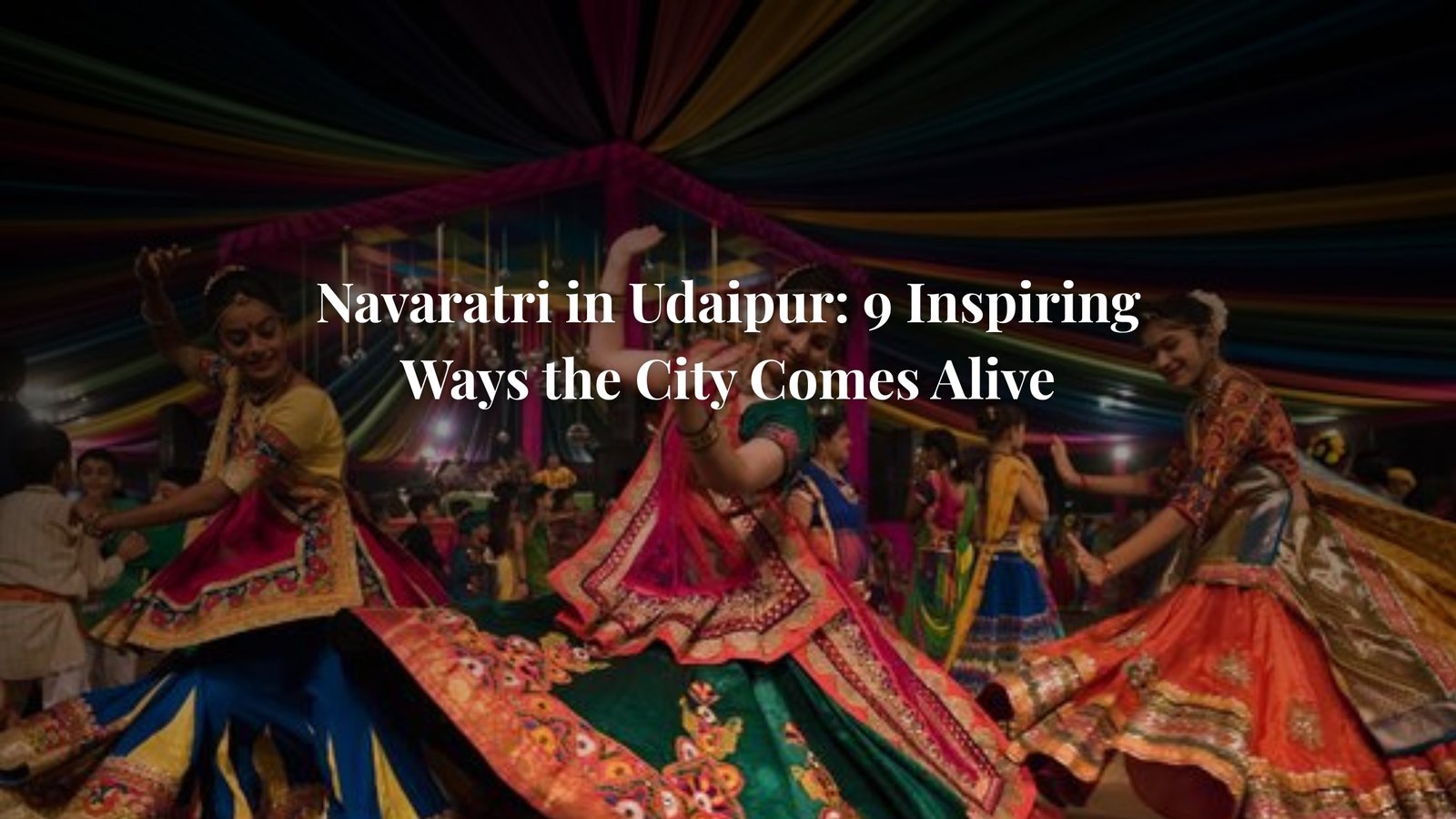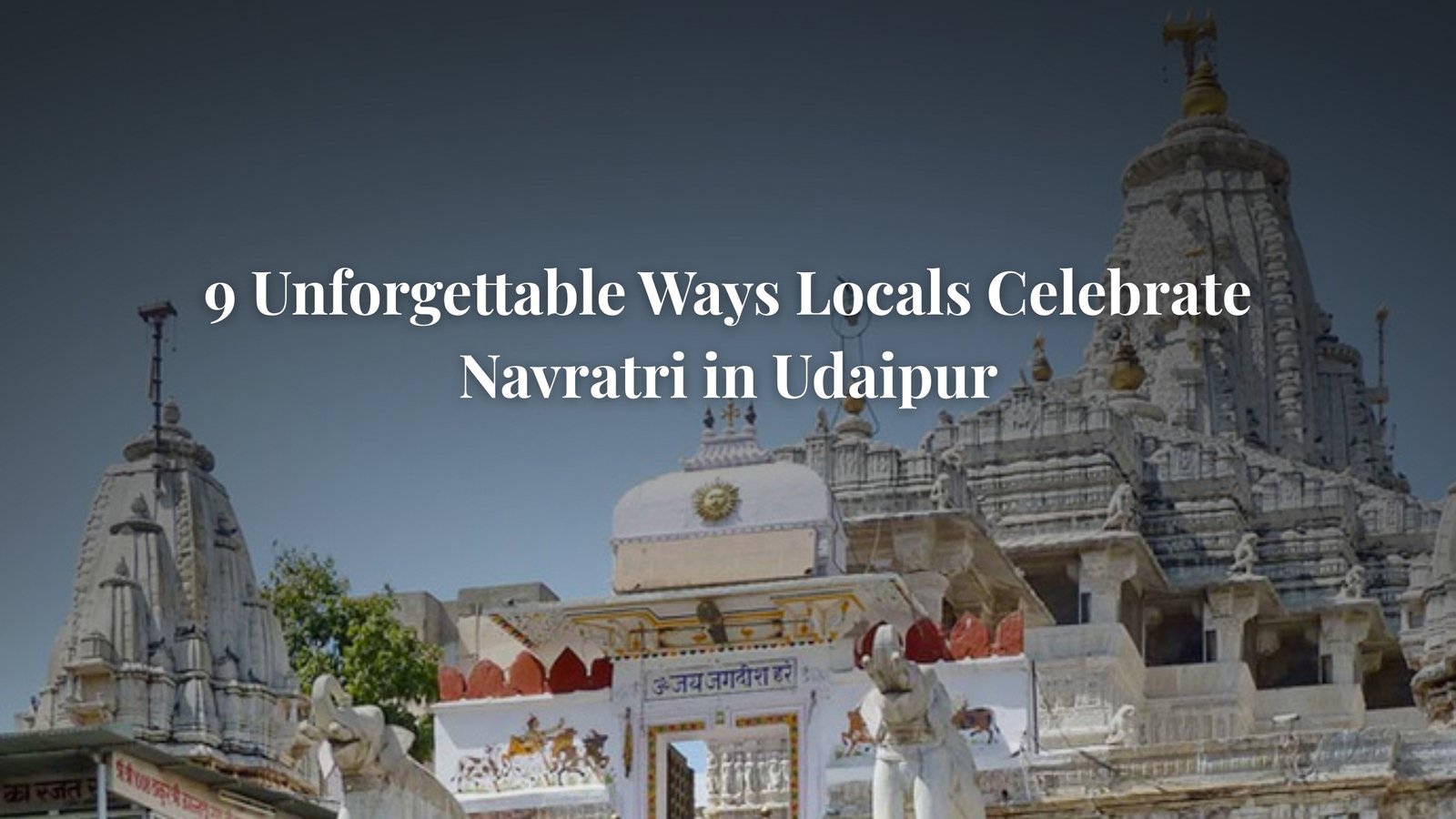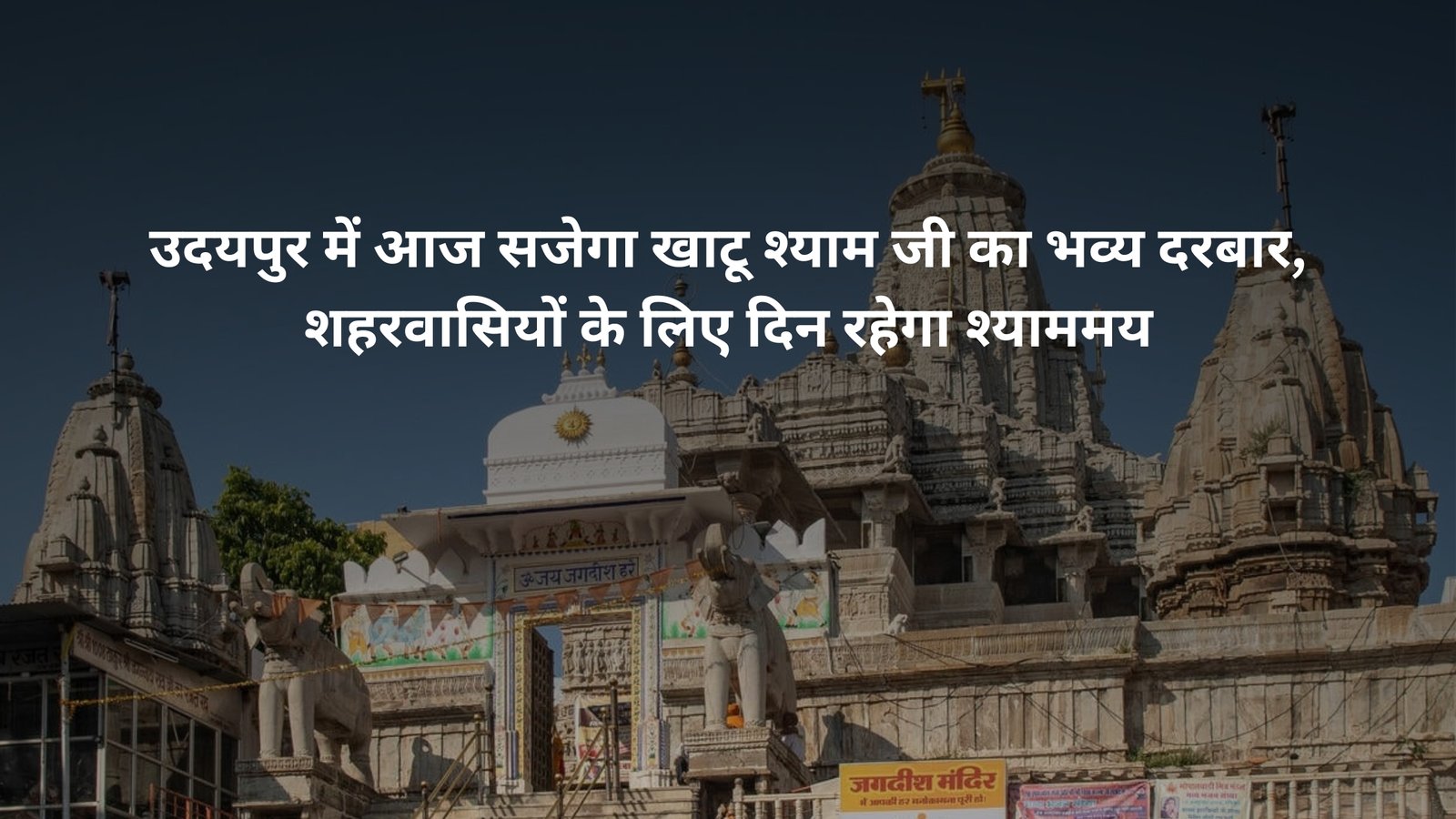The air is electric, a symphony of joy and devotion that sweeps across India. Today, marks the auspicious occasion of Dussehra—a festival steeped in powerful history and celebrated with an unparalleled sense of victory. This ten-day journey, culminating in Dussehra, is a profound cultural experience, especially in the regal City of Lakes, Udaipur. For the curious traveller, understanding and engaging with this festival of Dussehra is to unlock the very soul of Rajasthan.
Dussehra: The Powerful History of a 10-Headed Defeat
The foundation of Dussehra, also known as Vijayadashami (meaning “Victory on the Tenth Day”), is built on two central, powerful mythological narratives, both symbolising the positive sentiment of good vanquishing evil.
The 10-Day Battle of Lord Rama
The most universally celebrated historical root of Dussehra lies in the epic Ramayana. The Dussehra festival marks the day Lord Rama, the seventh avatar of Vishnu, achieved his decisive victory over the ten-headed demon king, Ravana, who had abducted his wife, Sita. Lord Rama fought for nine consecutive nights (Navratri), ultimately defeating the 10 heads of Ravana on the tenth day—Dussehra. These 10 heads are said to symbolise the 10 vices of humankind: Kama (lust), Krodha (anger), Moha (attachment), Lobha (greed), Mada (pride), Matsarya (jealousy), Manas (mind), Buddhi (intellect), Chitta (will), and Ahankara (ego). The burning of Ravana’s effigy on Dussehra is thus a symbolic act of burning away one’s own inner negativity.
Goddess Durga’s Triumph: The Other Facet of Dussehra
In various parts of India, Dussehra also celebrates the goddess Durga’s powerful victory over the buffalo demon Mahishasura. After a fierce, protracted 10-day battle, the divine feminine Shakti (power), embodied by Goddess Durga, successfully ended the demon’s reign of terror on the tenth day. This narrative intertwines perfectly with the Navratri celebrations leading up to Dussehra, dedicating 10 days to the worship of the nine forms of the Goddess and culminating in the grand farewell on Vijayadashami or Dussehra. This reinforces the positive message: that righteousness and moral strength will always lead to victory.
A Traveller’s Guide: Experiencing Dussehra in Regal Udaipur
While the North revels in elaborate Ramlila performances, Udaipur, the heart of Mewar, presents a unique and exceptionally regal celebration of Dussehra, deeply rooted in Rajput tradition. The City of Lakes offers the traveller an unforgettable blend of royal spectacle and intimate cultural immersion.
The Grand Ashwa Pujan: Udaipur’s Royal Dussehra Ritual
The most distinctive aspect of Dussehra in Udaipur is the powerful Ashwa Pujan (Worship of the Horse) ceremony. The Rajput warrior class held their horses and weapons in the highest regard, as they were fundamental to their livelihood and victory. On Dussehra, the current Custodian of the House of Mewar and the royal family conduct this spectacular ritual.
- What to See: You can witness a magnificent procession where the horses, often decorated in elaborate, traditional attire, along with royal arms and vehicles, are worshipped. This is a solemn yet vibrant display of heritage, reaffirming the historical connection between the warrior, his tools, and his quest for victory. This tradition is a spectacular sight for any traveller.
Dussehra Melas and Ravan Dahan
While the Ashwa Pujan is the main royal attraction, the people of Udaipur celebrate with the widely popular Ravan Dahan.
- What to Engage In: Head to the local grounds, where colossal effigies of Ravana, his brother Kumbhakarna, and son Meghnad, are constructed over several days. The anticipation builds throughout the evening, culminating in a climactic moment just after sunset when an arrow, sometimes shot by an individual dressed as Lord Rama, sets the effigies ablaze. The sight of the towering, 10-headed demon dissolving into smoke and fireworks, accompanied by the cheers of a huge crowd, is an incredibly powerful and positive shared experience.
Beyond the Fire: 7 Must-Do Activities for a Dussehra Traveller
To make the most of your Dussehra holiday in the City of Lakes, here are 7 essential activities a traveller should engage in today (the day before the main festival) and on the day itself:
- Immerse in Ramlila: Seek out local performances of Ramlila in the smaller city neighbourhoods. The emotional connect of the local populace with the epic story of Lord Rama’s victory offers a truly authentic, deep cultural engagement during the build-up.
- The Lake Pichola Boat Ride: Take a sunset boat ride on Lake Pichola. Witnessing the City Palace and Jag Mandir bathed in the soft evening light provides a sense of peace, a beautiful contrast to the festive fervor.
- Worship the Shami Tree: Rajputs traditionally worship the Shami tree (Prosopis cineraria), believed to bring good fortune and victory. Ask a local about this custom, or you might find this ritual being performed near a local temple.
- Explore the City Palace Complex: The sheer grandeur of the Mewar dynasty is best absorbed at the City Palace. Walk the halls and learn about the powerful history that governs the royal celebrations.
- Attend a Local Mela: Many small fairs (Melas) spring up around the Ravan Dahan sites. Indulge in local street food, shop for Rajasthani handicrafts, and enjoy the Ferris wheel rides. This is where you feel the true, uninhibited positive energy.
- Visit Bagore Ki Haveli: Head here for the evening cultural show, Dharohar. It’s a spectacular showcase of traditional Rajasthani dance, music, and puppet shows, all celebrating the vibrant culture that culminates.
- Savor Festive Cuisine: Dussehra is a time of feasting. Try regional delicacies like Dal Baati Churma or festive sweets like Jalebi and Fafda from local vendors. Food is, after all, a positive gateway to culture!
Conclusion: The Powerful Promise of Dussehra
From the powerful mythological roots of a 10-headed demon’s defeat to the regal Ashwa Pujan of Udaipur, Dussehra remains an eternally significant festival. It is a positive and constant reminder that no matter how powerful the darkness, the light of truth and virtue will ultimately achieve victory. As the effigies burn tomorrow, we share a collective moment of spiritual cleansing, embracing the positive promise of new beginnings. So, immerse yourself in the lights, the traditions, and the palpable sense of victory! The 10-day cycle concludes with a blast of hope—a truly unforgettable experience for every traveller.




